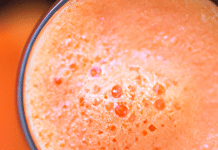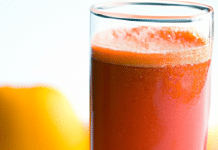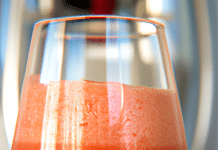Juicing has become a popular way to incorporate more fruits and vegetables into our daily diets, but have you ever wondered if there are any downsides to using a juicer machine?
In this article, we will explore the potential disadvantages of juicer machines, shedding light on factors such as nutrient loss, increased sugar consumption, and the need for thorough cleaning.
Let’s uncover the cons of this trendy kitchen gadget so you can decide whether juicing is right for you.
Review contents
Difficulty in Cleaning
Cleaning a juicer machine can be quite a daunting task, and there are several reasons why it can be challenging.
Residue Accumulation
One of the significant difficulties in cleaning a juicer machine is the accumulation of residue. As we extract juice from fruits and vegetables, remnants of pulp and fiber tend to get stuck in various parts of the juicer. This residue can be stubborn and requires thorough cleaning to remove it altogether. Neglecting to clean these parts properly can result in a build-up of bacteria and mold, affecting the cleanliness and hygiene of the juicer.
Small Components
Juicer machines consist of numerous small components that extract and separate juice from the produce. While these components are essential, they can make cleaning more challenging. Components such as filters, blades, and strainers often have tiny crevices and hard-to-reach areas where residue can accumulate. It requires patience and attention to detail to clean these components thoroughly.
Time-Consuming Process
Cleaning a juicer machine can be time-consuming, especially if not done immediately after use. Disassembling the various parts of the machine, cleaning each component separately, and ensuring they are scorched before reassembly can be pretty time-consuming. This can be a significant drawback for busy people as it adds an extra step to their daily routine.
Oxidation and Nutrient Loss
Juicing has become popular due to its association with health benefits, but it does come with disadvantages that can impact the nutrient content of the juice.
Introduction to Oxidation
Oxidation is a natural process when fruits and vegetables are exposed to air. When produce is juiced, the process is accelerated as the juicer introduces oxygen, breaking down the juice’s enzymes and other beneficial compounds. This oxidation can lead to a loss of nutrients and a decrease in the overall nutritional value of the juice.
Impact on Nutrient Content
The oxidation process can have a detrimental effect on the nutrient content of the juice. Vitamins, such as vitamin C, are particularly susceptible to degradation when exposed to oxygen. Enzymes and antioxidants in the juice can also be affected, diminishing their health benefits. Therefore, consuming freshly made juice can provide a higher concentration of essential vitamins, minerals, and enzymes than juice that has been stored or exposed to air for a considerable time.
Importance of Consuming Fresh Juice
To maximize the health benefits of juicing, consuming the juice immediately after extraction is crucial. Freshly made juice contains higher levels of vitamins, enzymes, and antioxidants, ensuring we obtain the maximum nutritional value from the produce. While it may be tempting to make a large batch of juice and store it for later use, the oxidation process and nutrient loss make it less desirable from a nutritional standpoint.
High Noise Levels
Juicer machines can be quite noisy during operation, which can have various consequences in different living situations.
Disturbance to Household Members
The high noise levels of juicer machines can be disruptive, especially in households with multiple occupants. Juicing in the early morning or late at night can disturb others sleeping or trying to concentrate. It can be exceptionally bothersome for those living in shared accommodations such as apartments, where noise can readily travel through thin walls.
Inconvenient for Apartment Living
The noise produced by juicer machines can be inconvenient for apartment residents. Neighbors may be easily disturbed by the loud and continuous noise of juicing. This can lead to strained relationships or complaints from neighbors, causing unnecessary stress and tension.
Potential Hearing Damage
Prolonged exposure to high noise levels can have detrimental effects on our hearing. The continuous noise produced by juicer machines can be harmful, mainly if proper ear protection is not used. Over time, this can lead to hearing loss or other hearing-related issues. Considering the potential risks of using a juicer machine regarding hearing health is essential.
Costly Investment
Acquiring a juicer machine can be a significant investment, particularly considering the various costs associated with its maintenance and operation.
Initial Purchase Cost
The initial cost of purchasing a juicer machine can be pretty high, depending on the chosen brand, model, and features. Higher-quality juicers with advanced functionalities tend to be more expensive. Therefore, investing in a juicer machine may not be financially viable for those on a tight budget.
Frequent Replacement of Parts
Juicer machines consist of several parts that may require replacement over time. This can add to the overall cost of owning a juicer machine, mainly if the parts are not covered by warranty or readily available. Filters, blades, and containers may need to be replaced regularly due to wear and tear.
Electricity Consumption
The operation of juicer machines requires electricity, and the amount of power consumed can contribute to monthly energy bills. Continuous juicing sessions or high-powered juicer models can significantly increase electricity consumption. This additional cost should be considered when deciding to purchase a juicer machine.
Limited Juice Shelf Life
Juices extracted from fruits and vegetables have a limited shelf life, which can pose challenges for those who prefer to consume juice at their convenience.
Exposure to Air
Once juice is extracted, it is immediately exposed to air, which triggers oxidation. This exposure can lead to a loss of nutrients and a decrease in the juice quality. Over time, the juice may develop a bitter taste and lose its vibrant color.
Nutrient Degradation
As mentioned earlier, the oxidation process can cause a degradation of essential nutrients in the juice. Consequently, the longer the juice is stored, the more nutrients it may lose. This can significantly reduce the health benefits associated with juicing.
Requirement for Immediate Consumption
To fully enjoy the nutritional benefits of juice, consuming it immediately after extraction is recommended. Unfortunately, this may not always be possible or convenient, especially when juicing larger quantities or as part of a busy lifestyle. Consuming the juice promptly can be limiting and may not fit with specific schedules or preferences.
Inefficient Use of Produce
Despite its reputation for promoting health, juicing may result in the inefficient use of produce.
High Pulp Waste
Juicer machines extract the liquid portion of fruits and vegetables, leaving behind the pulp. The pulp contains dietary fiber, an essential component of a healthy diet. However, the high pulp waste generated by juicing means that a significant portion of the produce’s nutritional value is discarded. This waste can be especially notable when juicing soft fruits or leafy greens.
Lesser Yield Compared to Blending
Juicing often produces a smaller quantity of juice from a given amount of produce than blending. While this may not be of significant concern for some, blending may be a more suitable option for those seeking to maximize their juice yield or minimize food waste.
Potential Loss of Dietary Fiber
Dietary fiber is crucial for maintaining a healthy digestive system and managing weight. Unfortunately, juicing removes a significant portion of fiber-rich content from the produce, resulting in less fiber intake. This can be a drawback for individuals who rely on juicing to meet their daily fiber requirements.
Troublesome for Certain Fruits and Vegetables
Certain fruits and vegetables can pose challenges when using a juicer machine.
Soft Fruits and Berries
Soft fruits and berries, such as bananas, avocados, or strawberries, are unsuitable for juicing. These fruits have high water content and lack the necessary fibers to process them by a juicer machine effectively. Attempting to juice these fruits can lead to clogged filters and strained components.
Leafy Greens
Juicer machines can struggle to effectively extract juice from leafy greens like spinach, kale, or wheatgrass. These greens are fibrous and require more power and specialized juicer settings to yield satisfactory results. Without the proper equipment, juicing leafy greens may result in minimal juice extraction and produce waste.
Necessity of Pre-Cutting
In many cases, produce must be pre-cut into smaller pieces to fit into the juicer’s feeding chute. This additional step can be time-consuming and require extra effort, mainly when dealing with larger fruits or vegetables. The necessity of pre-cutting can make the juicing process less convenient, especially for those with limited time or patience.
Not Suitable for Large Batches
Juicer machines may not be the most efficient option for juicing for multiple people or preparing large quantities of juice.
Time-Consuming Process
Juicing a large quantity of produce using a juicer machine can be time-consuming. Cutting fruits and vegetables into smaller pieces, continuously feeding them into the juicer, and cleaning the machine afterward can significantly increase the time and effort required.
Limited Juice Container Capacity
Most juicer machines come with a container to collect the extracted juice. However, these containers have limited capacity, which can be insufficient for preparing large batches of juice. Multiple rounds of juicing and transferring the juice to separate containers may be necessary, further extending the juicing process.
Inconvenience for Serving Multiple People
When serving juice to a group of people, using a juicer machine can be inconvenient. The time-consuming nature of the juicing process and limited juice container capacity can make it challenging to serve everyone promptly. This can inconvenience parties or gatherings requiring a larger volume of juice.
Risk of Bacterial Contamination
Juicer machines risk bacterial contamination if proper cleaning and handling procedures are not followed.
Unwashed Produce
Fruits and vegetables should be thoroughly washed before juicing to remove any dirt, pesticides, or potential bacteria on the surfaces. Failure to do so can introduce harmful microorganisms into the juicer, increasing the risk of contamination.
Difficulty in Proper Cleaning
As mentioned earlier, cleaning a juicer machine can be challenging due to the accumulation of residue in various parts. If the cleaning process is not done meticulously, bacteria and mold can thrive in the hidden corners and crevices of the machine. This poses a risk of contamination, as these microorganisms can contaminate subsequent batches of juice.
Potential for Foodborne Illness
Improper handling, cleaning, or storage of juicer machines can lead to a higher risk of foodborne illnesses. Consuming juice contaminated with pathogenic bacteria, such as Salmonella or E. coli, can cause severe gastrointestinal symptoms and threaten overall well-being. It is essential to prioritize cleanliness and food safety when using a juicer machine.
Lack of Versatility
While juicer machines excel at extracting juice from fruits and vegetables, they may fall short regarding versatility in the kitchen.
Limited to Extracting Juice Only
The primary function of a juicer machine is to extract the liquid portion from fruits and vegetables. It is not designed to handle other food items or ingredients, limiting its utility in the kitchen. Functions such as chopping, grating, or blending are not typically included in juicer machines, making them less suitable for diverse culinary needs.
Inability to Process Other Miscellaneous Ingredients
Cooking enthusiasts enjoy experimenting with various ingredients, including nuts, spices, and herbs. Unfortunately, juicer machines are not equipped to handle these ingredients effectively. Their design and functionality are geared towards processing liquid-rich produce, restricting the range of recipes and culinary possibilities.
Less Diverse Set of Recipes
The limited capabilities of juicer machines can result in a less diverse set of recipes. While they excel at producing fresh, nutrient-rich juices, they may not be suitable for creating elaborate dishes or incorporating a wide range of flavors and textures.
This can hinder creativity and experimentation in the kitchen, limiting the culinary experience for those seeking versatility in their recipes.
































